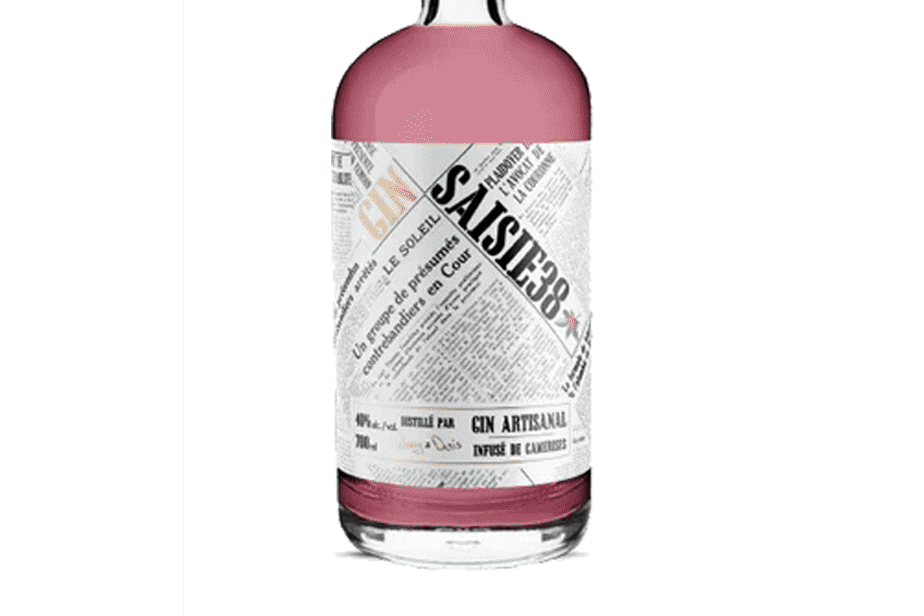Quebec alcohol producers have no shortage of ideas for showcasing local berries. Their drinks are another way to discover the richness of Quebec’s terroir. Here are five lesser-known spirits, some of which are only sold where they are produced.
Posted at 11:00 a.m.
Haskap gin
There are more than a hundred gins in Quebec, but that of Denis Carrier and Nancy Jacques is quite different. It is not made from corn or wheat alcohol, but with haskap alcohol. For eight years, the couple has been growing this little fruit on the South Shore of Quebec, in the Bellechasse region. He acquired a still two years ago. Launched in the midst of a pandemic, the gin, named Saisie38, was all the rage. “Our first 600 bottles left in less than two hours,” the couple reveals. The name of the cuvée is a nod to the clandestine distillery in activity during prohibition at the Saint-Anselme farm and which was the subject of a major seizure in 1938. Today, the production of alcohol from Camerises St-Philippe is legal, assures its producer. Gin is sold in different formats only at the farm.
Saisie38, Camerises St-Philippe, $42
Saskatoon flavored cider

PHOTO FROM THE COMPTON CIDER HOUSE WEBSITE
Amélanche, Compton cider house
The saskatoon has a lot of bitterness, tannins and gives little juice. This is why alcoholic products based on this small black fruit are rather rare. Saskatoon is one of the rare exceptions. Producer Eve Grenier of Cidrerie Compton uses it to flavor her McIntosh cider. Thanks to the maceration of the saskatoon, its cider has a pretty pink color and its flavors are more complex. The drink is also aged in oak barrels that have previously been used for the vinification of red wine. “The Saskatoon berry has notes of tobacco, describes Mme Attic. It gives a farm cider. The Cidrerie Compton grows a dozen different fruit trees, including cherries and haskaps. It also uses these two other small fruits to flavor its ciders. All the production of the cider house is certified organic, and the bottles are on deposit. For environmental reasons, the company reuses the bottles.
Amélanche, Compton Cidrerie, $22
Blackcurrant brandy

PHOTO FROM THE CAPTAIN’S VINAIGRERIE WEBSITE
Blackcurrant eau-de-vie, Vinaigrerie du Capitaine
Vincent Noël has always dreamed of distilling a fruit-based eau-de-vie, as is the tradition in France. The pioneer of blackcurrant cultivation in Quebec, based on the southern flank of Île d’Orléans, realized his dream two years ago when he received his permit at the start of the pandemic. At the head of Vinaigrerie du Capitaine, Mr. Noël explains that blackcurrant eau-de-vie is rare because the small fruit is expensive. Despite everything, this enthusiast did not want to compromise on quality: he wanted to produce a tasty eau-de-vie. It succeeded ! The fruity and slightly herbal notes of cassis fill the glass. On the palate, the eau-de-vie is very silky and fruity. It is sold in several formats, only on the site.
Blackcurrant brandy, Vinaigrerie du Capitaine, 750 ml, $56.75
Everyone loves cherries

PHOTO FROM THE SAQ WEBSITE
FMR Valentine
The Morello cherry is one of the favorite berries of alcohol producers. Thanks to its fragrant and tangy taste, it is found in a host of products, including the new liqueur from the Distillerie de la Chaufferie. The name of the drink, Valentine, alludes to the variety of the fruit grown in Saint-Paul-d’Abbotsford. Distiller Vincent Van Horn has found the right dosage: the drink is sweet and smooth on the palate, but not too much! The cherry flavors are evident, and the finish is lingering.
FMR Valentine (15011466), $35.25
Wild currants and more in this gin

PHOTO FROM THE SAQ WEBSITE
North Wind Distillery Le Norkotié
Currant is the star ingredient of Norkotié gin. Its producer, Catherine Blier, explains that on the Côte-Nord, where the distillery is located, this little red fruit grows wild. “We pick it on the edge of the river,” she says. It’s everywhere. It’s impossible not to notice the tangy notes she brings to her gin. Because the distillery uses an average of 8 kg of currants per batch of 200 bottles. It’s a lot ! She also adds black haskap, fermented poplar, Labrador tea and aronia berries. The whole thing gives a typical boreal signature and a silky texture to his drink.
Distillerie Vent du Nord Le Norkotié (14447065), $51.50

